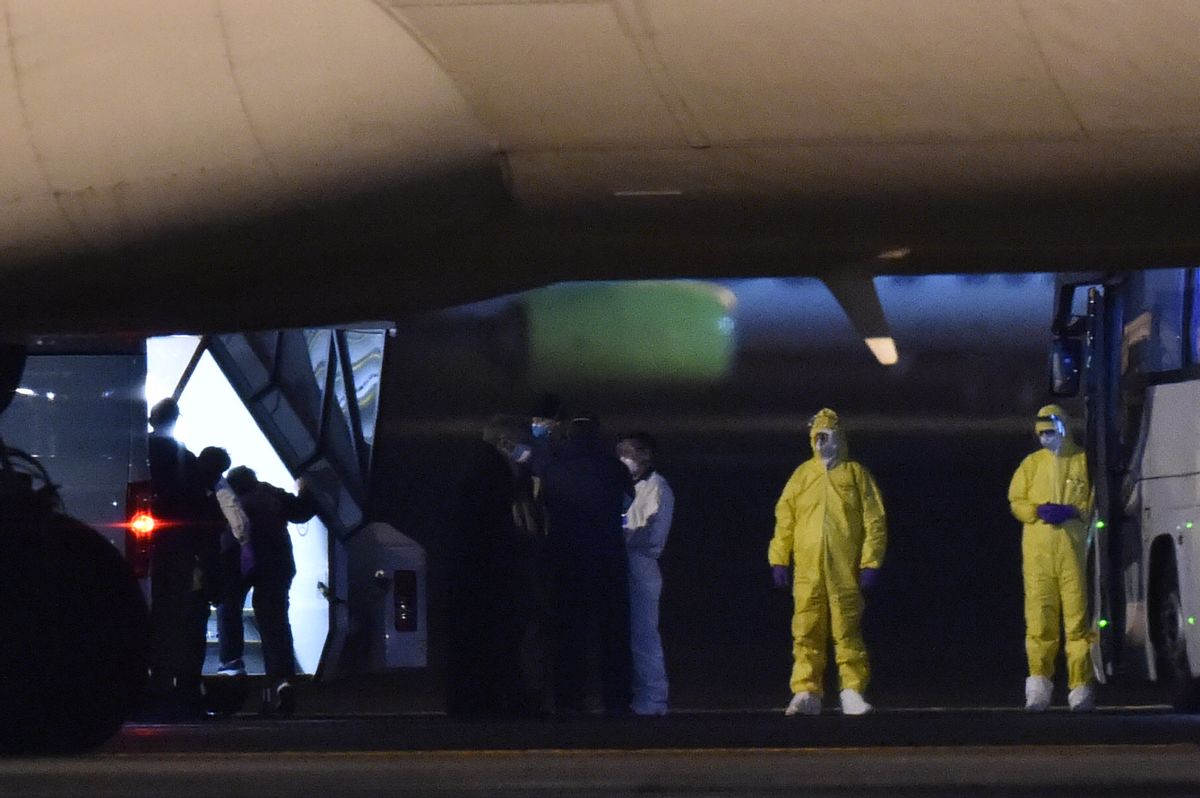On Feb. 3 2020, health officials announced that a new coronavirus-infected individual was a passenger on the luxury cruise liner Diamond Princess. At the time, the vessel was off the coast of Yokohama, Japan. In response, the Japanese government mandated a 14-day quarantine, forcing passengers to remain on the ship to avoid spreading the disease to the broader population. Among those passengers were 328 Americans.
The plan had been to send these Americans, by way of a chartered State Department jet, to containment facilities in the United States, following their Japanese quarantine. The condition that no one who tested positive should be a passenger on this flight was included in a Centers for Disease Control and Prevention (CDC) press release from Feb. 15:
All travelers from Japan will be screened before boarding the State Department-chartered aircraft to prevent symptomatic travelers from departing Japan. These planes will be met by a team of U.S. Government personnel deployed there to assess the health of the passengers. The passengers will be screened before leaving the ship and monitored and evaluated by medical and public health personnel every step of the way, including before takeoff, during the flight, and after arrival.
On the day of the flight, however, the government learned that 14 Americans had recently tested positive for COVID-19 (the disease caused by the virus), forcing a game-time decision on the tarmac by the U.S. government, as reported in The Washington Post:
As the buses [filled with quarantined Americans] idled, U.S. officials wrestled with troubling news. New test results showed that 14 passengers were infected with the virus. The U.S. State Department had promised that no one with the infection would be allowed to board the planes. A decision had to be made. Let them all fly? Or leave them behind in Japanese hospitals?
Ultimately, the State Department decided to allow these 14 individuals on the plane in an area separated from the rest of the passengers by plastic. According to The Washington Post, "The State Department and a top Trump administration health official wanted to forge ahead … But officials at the Centers for Disease Control and Prevention disagreed, contending they could still spread the virus." A joint State Department and Health and Human Services notice explained the decision:
During the evacuation process, after passengers had disembarked the ship and initiated transport to the airport, U.S. officials received notice that 14 passengers, who had been tested 2-3 days earlier, had tested positive for COVID-19. These individuals were moved in the most expeditious and safe manner to a specialized containment area on the evacuation aircraft to isolate them in accordance with standard protocols. After consultation with HHS officials, including experts from the HHS Office of the Assistant Secretary for Preparedness and Response, the State Department made the decision to allow the 14 individuals, who were in isolation, separated from other passengers, and continued to be asymptomatic, to remain on the aircraft to complete the evacuation process.
This decision was so controversial that, according to the Post, "unhappy CDC officials demanded to be left out of the news release that explained that infected people were being flown back to the United States."
While it is accurate to say that the Trump administration, via "the State Department and a top Trump administration health official," overruled the CDC’s position and allowed these 14 individuals transport on a plane with uninfected individuals, it bears mentioning that the decision was reportedly made without Trump’s knowledge.
Trump was "briefed on the decision and agreed that healthy passengers should not be on the plane with sick ones," according to three senior administration officials who spoke to The Washington Post. "The State Department and a top U.S. health official ultimately decided to bring back the 14 Americans who tested positive for the virus on the planes and place them in isolation — without informing the president first," they said.
